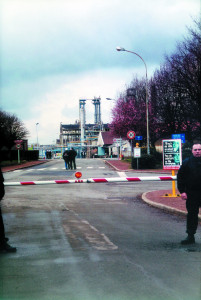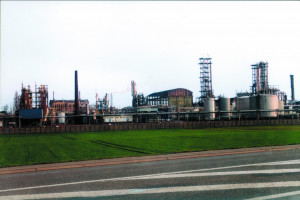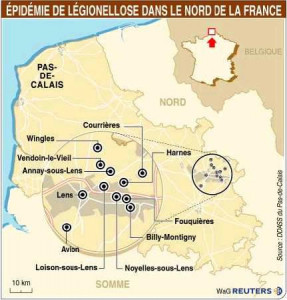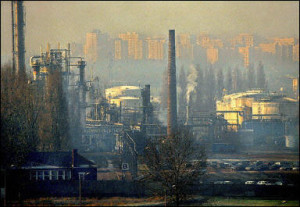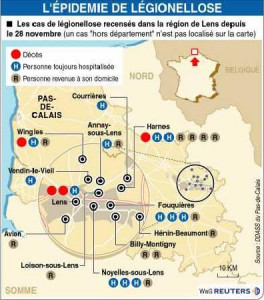On November 28, 2003, two cases of Legionnaire’s Disease were recorded, the first symptoms of which dated back to the beginning of November. The dates of outbreak of the pathology, which were then staggered over time, revealed two distinct waves of contamination with a total of 86 individuals contaminated, aged between 32 and 92 (of whom 18 died). These cases all broke out within a radius of slightly over 10 km around the city of Lens. The DDASS (local Sanitary and Social Affairs Office) conducted environmental investigations at the homes of patients and within several facilities open to the public. At the request of the DRIRE (Regional Agency for the Environment, Research and Industry), all facilities operating cooling towers within the designated zone were asked to adopt measures to identify the eventual presence of legionella and clean their circuits. On October 15, the operator of a chemical installation specialised in alcohols and fatty acids extracted samples whose results revealed a concentration of legionella at a level of 730,000 CFU units/litre. Following a shock treatment using biocides, analyses 15 days later yielded a concentration of less than 100 CFU/litre. On November 20, another inspection announced that the level of 600,000 CFU/litre had been reached. In light of these results, the chemical plant’s cooling towers were ordered to be shut down on November 29. As of December 3, the tower circuits were drained and cleaned. Operations resumed on December 22, and a prefectural decree was issued January 2, 2004 mandating the operator to halt all plant activity once again due to the appearance of a second epidemic wave. High pressure cleaning work could have induced the dispersion of a contaminated aerosol. At the same time, the Prefect commissioned the DRIRE Agency to extend its investigations, notably by inventorying all cooling towers within the neighbouring 53 towns and imposed the shutdown of several installations (automobile washing stations, food processing activities, refrigerated warehousing, etc.), causing layoffs to hundreds of workers for several days. Even though a similarity was detected between the strains extracted from 23 of the patients and those present in the suspected cooling tower at the petrochemical plant, other sources of contamination could not be ruled out. High legionella counts in the lagoons of this same plant necessitated turning off aerators on January 20. This site’s revenue loss would amount to several millions of Euros, corresponding to a production downtime of 14 weeks. A prefectural order authorising reactivation of the towers was issued on March 19, 2004, yet the plant would never operate again.
Download the detailed report in .pdf format (468 Kb)



